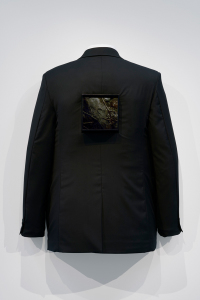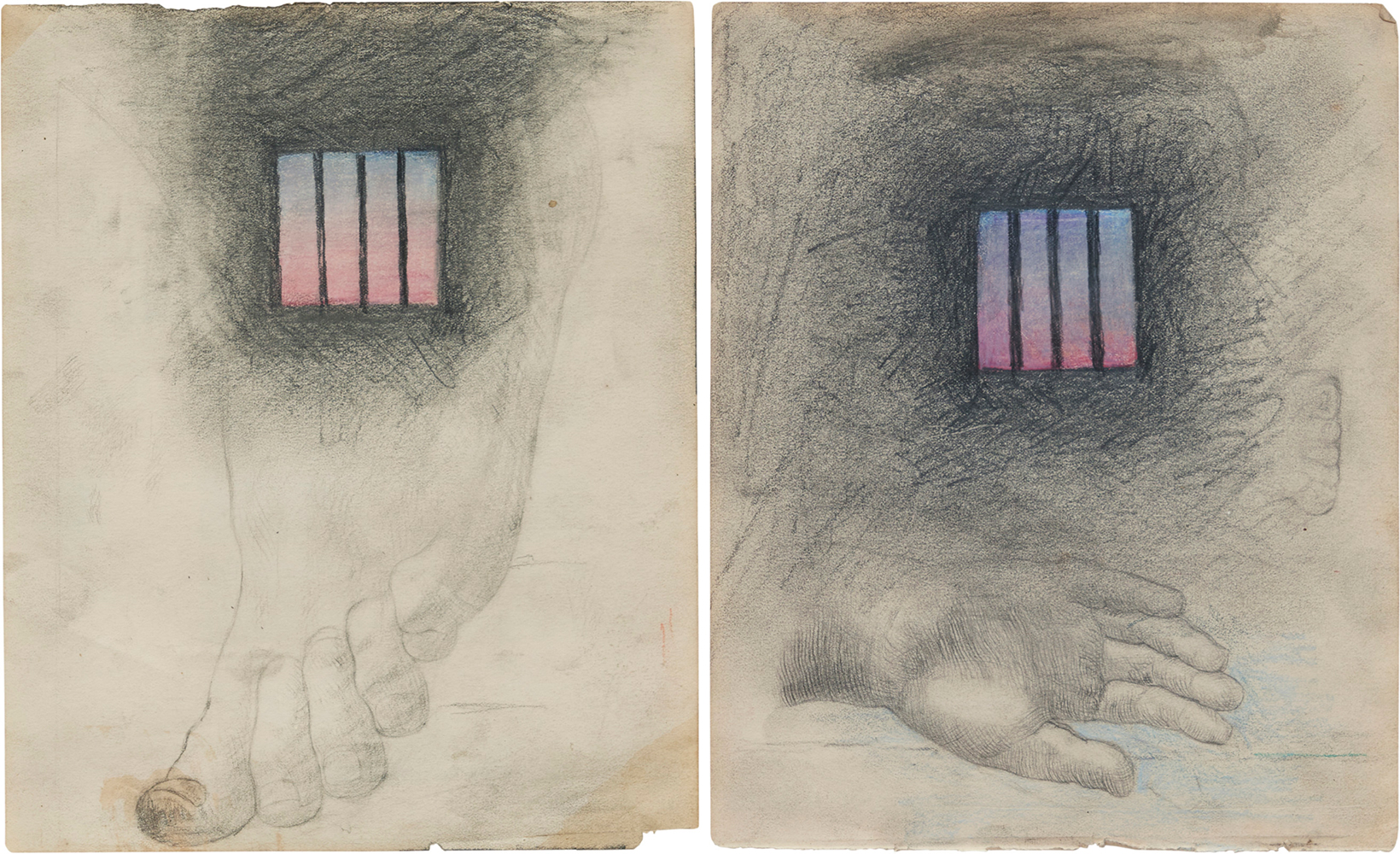ART-PRESENTATION: Robert Gober-“Shut up.” “No,You shut up.”
 Robert Gober rose to prominence in the mid-80s and was quickly acknowledged as one of the most significant artists of his generation. Early in his career, he made deceptively simple sculptures of everyday objects beginning with sinks and moving on to furniture. In the 90s, his practice evolved from single works to theatrical room-sized environments.
Robert Gober rose to prominence in the mid-80s and was quickly acknowledged as one of the most significant artists of his generation. Early in his career, he made deceptively simple sculptures of everyday objects beginning with sinks and moving on to furniture. In the 90s, his practice evolved from single works to theatrical room-sized environments.
By Dimitris Lempesis
Photo: Matthew Marks Gallery Archive

Robert Gober’s solo exhibition “Sut Up.” “No. You Sut Up.” includes new drawings and sculptures made from a wide variety of materials including wood, resin, acrylic paint, cotton fabric and running water, all the works in the exhibition were made in Gober’s New York studio over the past five years. Robert Gober was born in Meriden, Connecticut, and grew up in the nearby town of Wallingford. Gober’s family members were strict Catholics, and Gober served as an altar boy at a church as a child. His family’s Catholicism and his experiences within the church were to shape his life and artwork. He has said, “I think the benefit of a Catholic childhood is your belief in visual symbols as transmitters of information and clues about life, whether it’s the mystery of life or life in general”. After high school, Gober applied to several art schools but was rejected by all of them. Instead, he attended Middlebury College, in Vermont, where he studied English Literature while taking several art courses where he acquired key, technical skills. For one semester, he had the opportunity to attend the Tyler School of Art in Rome, Italy. While he was there, he became well-acquainted with Italian art, visiting museums. Gober was particularly interested in the paintings of the Mannerist school, such as Pontormo, which distorted the proportions of people and spaces in direct contrast to the mathematical precision developed in the Renaissance. In the late 1970s in New York, his early years in the city, he did some painting, but was dissatisfied with the result. At one point he decided, on a whim, to make a doll house in the hope of being able to sell it. He became consumed with the project of building the dollhouse, and realized that he was creating a unique piece of sculpture. After his epiphany, Gober began to make sculptural works, fabricating highly crafted versions of everyday objects. He also began painting extensively again, and his first solo exhibition took place in 1984 at the Paula Cooper Gallery, where he exhibited his work “Slides of a Changing Painting” (1982-83). The 1980s saw the beginnings of the AIDS crisis, which closely affected Gober as a gay man watching many of his friends suffer from the disease. The New York art scene was decimated, and Gober made several series of works responding to this human destruction, most notably his hand-crafted sinks. The latent human presence that resides in his inanimate representations took on more recognizable figurative form in Gober’s work from the 1990s onwards: dismembered limbs began to populate his ever more complex installations, growing out of walls or human torsos, interspersing references to childhood and religion with architectural metaphors for both imprisonment and escape. For his 1997 exhibition at the Museum of Contemporary Art in Los Angeles, Gober made an installation with a wooden staircase ascending up the back wall, its steps rendered inaccessible by a cascade of flowing water, while three storm drains set in the floor offered glimpses of lifelike tide pools below. Gober produced a site-specific installation in the US pavilion at the 2001 Venice Biennale. Modern-day items of domestic life and bathroom cleanliness – etched pieces to look like newspaper clippings, a sink plunger sculpture, replica gin bottles, and flesh-like sculptures of male and female torsos, among other works – were arranged in a meticulous and uncrowded manner within the pavilion space. These objects brought in the uncomfortable realities of contemporary violence against gay individuals in America to the sacred halls of aesthetics and order of the Italian gallery space. Once again, Gober took advantage of a hallowed fine art platform to draw attention to the more obscure and obscene stories that objects can bring to the fore. The installation for his 2005 exhibition at Matthew Marks Gallery comprised eight drawings and fifteen sculptures arranged in rows like the pews of a chapel, leading to a large cross bearing a headless concrete crucifix with water pouring out of its nipples. On either side, a door slightly ajar revealed a bathtub with human legs cast in beeswax just visible above the water.
Photo: Robert Gober, Help me, 2018–2021, Pewter, glass, synthetic plastic polymer, epoxy putty, acrylic paint, wood, cotton, epoxy resin, 30¼ × 30⅜ × 18¾ inches; 77 × 77 × 48 cm, © Robert Gober, Courtesy the artist and Matthew Marks Gallery
Info: Matthew Marks Gallery, 522 West 22nd Street, New York, Duration: 6/11-23/12/2021, Days & Hours: Tue-Sat 10:00-18:00, www.matthewmarks.com









Right: Robert Gober, Untitled 2021, Graphite, colored pencil, pastel on found drawing, 8⅜ × 6⅞ inches; 21 × 18 cm, © Robert Gober, Courtesy the artist and Matthew Marks Gallery
